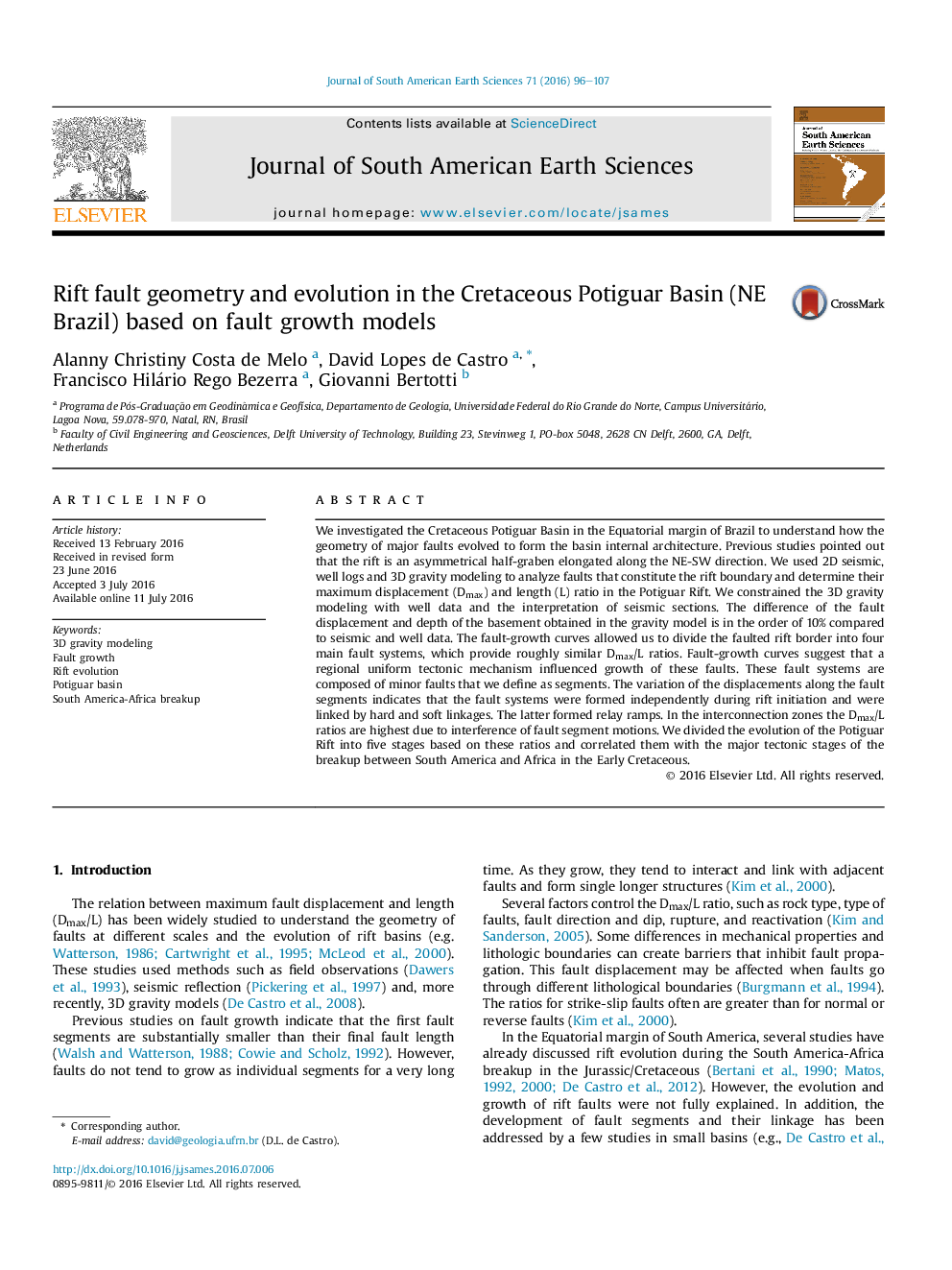| کد مقاله | کد نشریه | سال انتشار | مقاله انگلیسی | نسخه تمام متن |
|---|---|---|---|---|
| 6431297 | 1635139 | 2016 | 12 صفحه PDF | دانلود رایگان |

- The Potiguar Basin occurs in the Brazilian Equatorial margin.
- We investigate rift internal geometry and fault evolution in the Potiguar Basin.
- The fault geometry was derived from 3D gravity modeling, seismic and well data.
- Four main fault segments linked and formed the main rift border.
- Faults evolved from small segments and formed longer structures at a final stage.
We investigated the Cretaceous Potiguar Basin in the Equatorial margin of Brazil to understand how the geometry of major faults evolved to form the basin internal architecture. Previous studies pointed out that the rift is an asymmetrical half-graben elongated along the NE-SW direction. We used 2D seismic, well logs and 3D gravity modeling to analyze faults that constitute the rift boundary and determine their maximum displacement (Dmax) and length (L) ratio in the Potiguar Rift. We constrained the 3D gravity modeling with well data and the interpretation of seismic sections. The difference of the fault displacement and depth of the basement obtained in the gravity model is in the order of 10% compared to seismic and well data. The fault-growth curves allowed us to divide the faulted rift border into four main fault systems, which provide roughly similar Dmax/L ratios. Fault-growth curves suggest that a regional uniform tectonic mechanism influenced growth of these faults. These fault systems are composed of minor faults that we define as segments. The variation of the displacements along the fault segments indicates that the fault systems were formed independently during rift initiation and were linked by hard and soft linkages. The latter formed relay ramps. In the interconnection zones the Dmax/L ratios are highest due to interference of fault segment motions. We divided the evolution of the Potiguar Rift into five stages based on these ratios and correlated them with the major tectonic stages of the breakup between South America and Africa in the Early Cretaceous.
Journal: Journal of South American Earth Sciences - Volume 71, November 2016, Pages 96-107